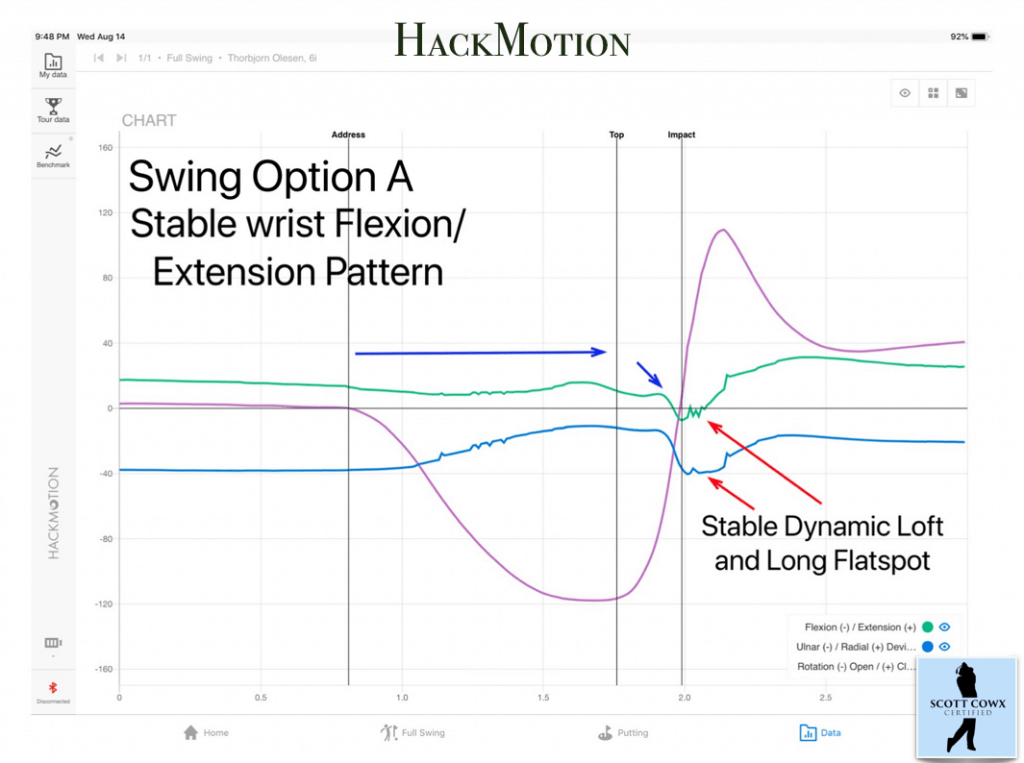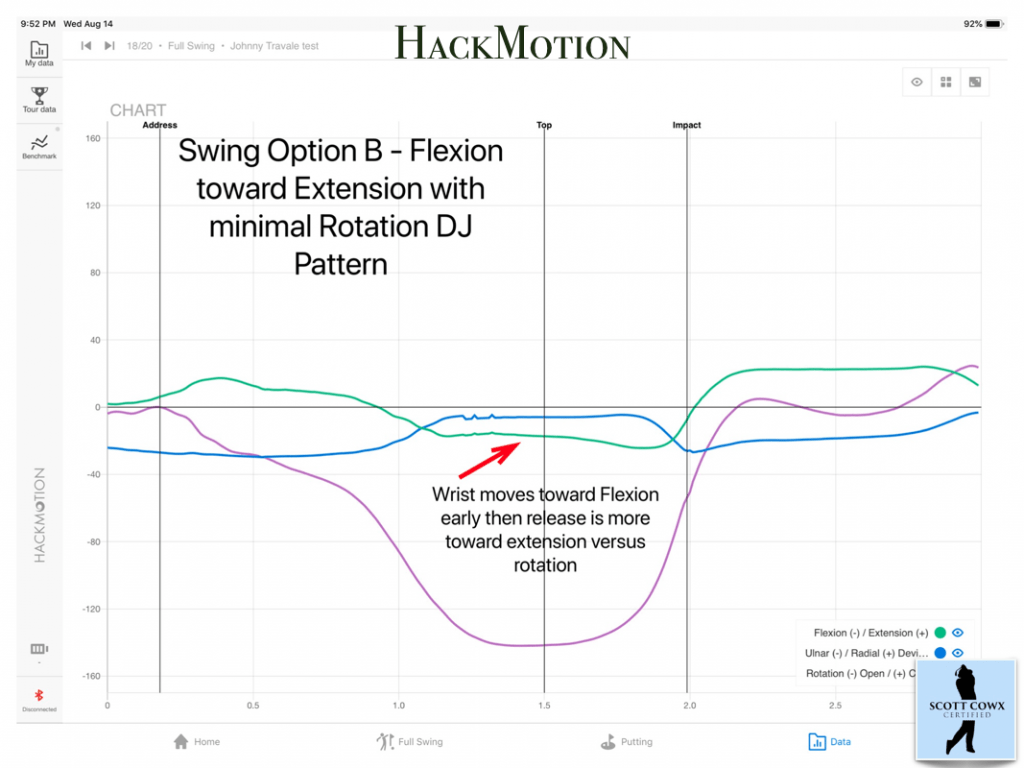Webinar – Tour Methods of Delivery by Scott Cowx
Have you ever wanted to know what wrist alignments can create the best consistency and which ones are used by top tour players? Read this post and learn from Scott Cowx – Canada PGA Teacher of the Year.
Watch the webinar in which Scott Cowx explains the 3 different tour methods of delivery
The terminology used:
- Flexion (-)/Extension (+) (green line) = Bowing/Cupping of the lead wrist
- Radial(+)/Ulnar (-) deviation (blue line) = Cocking/Uncocking of the lead wrist
- Global Rotation (purple line) = Global Rotation relative to address, Counter-clockwise (+) /clockwise (-)
If you want a basic introduction to wrist angle influence on club face, follow that link.
Below you will find tour player lead wrist data graphs which were analyzed in Scott’s presentation.
Option A – Stable Wrist Flexion/Extension pattern (Tommy Fleetwood)
Option A – relatively stable Flexion/Extension which creates stable dynamic loft and long flatspot. This is option used by players such as Tommy Fleetwood and Thorbjorn Olesen (his 6iron wrist data is below).
The speed of the clubhead is released more with wrist rotation rather than with wrist extension.
Notice how the green line (flexion/extension) changes relatively little during the swing and also post impact stays flatter than for other players. Thorbjorn Olese still moves into flexion during the downswing and after impact slowly extends the lead wrist.
Main characteristics of the pattern:
- The lead wrist extension is relatively stable throughout the swing, the move toward extension after impact is less rapid, stable dynamic loft.
- There is a lot of rotation after impact, speed is released more by wrist rotation, less by wrist extension (the purple line increases a lot).

Option B – Flexion Toward Extension, Less Rotation (DJ Pattern)
Option B – moving into flexion during backswing and then releasing club head speed through movement towards extension (can be still flexed at impact).
This is pattern used by players such as Dustin Johnson and several young players are having this pattern (Viktor Hovland).
Look at the graph below. Notice how the green line (flexion/extension) moves down into flexion then stays constant during transition and starts moving towards extension before impact (though still in slight flexion, negative at impact).
The speed of the clubhead has to go somewhere and for this pattern the speed is released mostly through extension.
Main characteristics of the pattern:
- The lead wrist goes into flexion during backswing, then flexion stays constant and wrist moves towards extension during release.
- The rotation amount through impact is lower – you can see that the purple line is much flatter than for Option A. There is less rotation at impact than at address (purple line below zero at impact), which shows the player has not supinated his forearms too much.

Option C – Radial Downcock Pattern (Longhitter Pattern)
Option C – increasing radial deviation while moving towards flexion during downswing.
This is option used by some longhitters who use their hands to add additional speed to their swing.
Do not mix this pattern with typical amateur faulty pattern – increasing extension a lot while adding radial deviation during downswing since this will open the clubface and make it very hard to control it and have stable ball flight.
Main characteristics of the pattern:
- The lead wrist has increasing radial deviation but only after player has started to go towards flexion during downswing.
- Release of the clubhead speed is in all 3 dimensions – extension, radial deviation and also rotation. A shorter flat spot, can be less consistent for amateurs who do not practice enough and struggle with timing.














